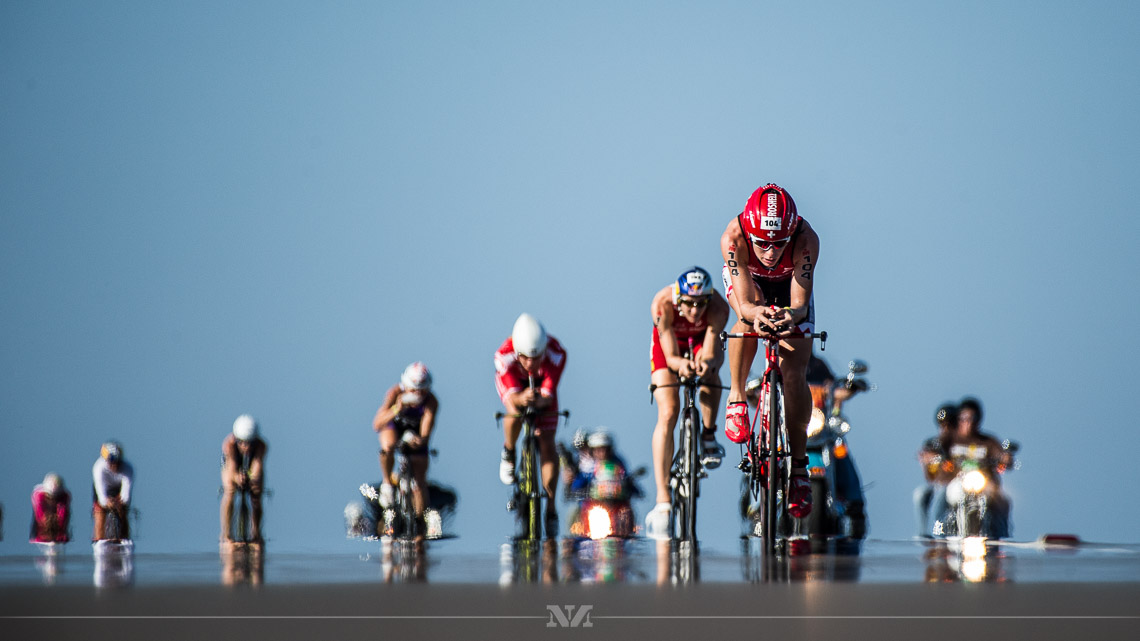
From cadence to power meters to aero helmets, you’ve got questions, and we’ve got answers.
The Ironman community posed questions about the second leg of a triathlon—the bike and had them answered by Mike Ricci, founder, and head coach at D3 Multisport and a lifelong triathlete.
When training on the bike, is it best to always use the tri bike or only use it when training is combined with an immediate run (brick)? I have both a road and tri bike but not sure the best practice for training. – Diana Madera-Olveira
The closer you get to your goal race of the year, the more specific you want your training to be. Using your race-day equipment is no different. If you want, jump on your road bike for easy recovery rides to give your body a break from the aero position. If you are doing race-specific sets or a race simulation (which you should be doing no matter what distance you are racing!), you should be on your triathlon bike.
Certainly a bike/run brick workout is race specific in my opinion, so ride the triathlon bike for these workouts. The more comfortable you are with your tri bike in training, the better you’ll race on it.
What one thing should I add to my training to increase speed—hills, tempo, etc? – David Patch
Endurance training consists of three things: endurance, strength, and speed. Endurance is obviously the most important of the three. What I recommend for increasing speed is hitting all of your energy zones over the course of a week to 10 days. This means some VO2 work, threshold, tempo, hills, and endurance riding.
During a normal 10-day block, you may do the VO2 work early in the week, then add in some threshold work a few days later. On the weekends, you may do a long hilly endurance ride with a tempo finish—hitting two zones in one workout. Remember that you have to build up to this schedule; once you do, you’ll see what areas you’re lacking in and then be able to concentrate more on those in your training.
How fast should you do your brick runs? Slow, or should you do speed work after a bike ride? – Jesus Carias
Varying run speeds off of bike rides works well. I recommend running once off the bike at an easy pace, once with a few strides inserted, and every other week a race pace run off the bike. Maybe it’s only for a few miles, but it will help get your body ready for what’s coming. You don’t want your pace to be a surprise to your legs on race day.
How does cycling in your heart rate zone work? … I feel like if I cycle “in my zone” I’m going to get dropped. – Abraham Mascorro
The most important thing to remember is to establish your training zones correctly before you can ride “in your zones.” Here’s a standard test I use to establish zones for my athletes: after a proper warm up, do an all-out 10 miles, or 30-minute test to get your average heart rate. Make sure you cool down when you’re done!
Once you have your average heart rate for the test, there are a few online calculators you can use to establish your training zones. Once you have the zones established properly you’ll see that your zone 2 or endurance zone isn’t necessarily so easy.
I’d like to know how much cycling you should be doing greater than six months out from an IRONMAN. We have a good program set covering 30 weeks, but how much riding should we be doing leading up to that? – Matt Oliver
This depends on how much time you have. If you can ride 100 miles a week, that’s great. If you have time to ride 150 miles a week, that’s great too. I would concentrate on your weaknesses that far out, however, and not so much the quantity of your riding. I like to say quality over quantity, especially that far out from an IRONMAN race. So, if hills are your weakness, that’s where you should spend your time. If it’s riding in the aero bars, or riding rollers, or false flats, that’s where you’re going to get the most bang for your buck.
Is an aero helmet really worth the cost? – Anthony James
From what’s been written in the studies out of wind tunnel tests an aero helmet offers as much time savings as more aero wheelsets. If you figure out the cost per time savings, I would put my money on the aero helmet. If you are competitive and are trying to do well in your age group and don’t have an aero helmet, you are giving your competitors a huge advantage.
Read the full article at Ironman.com







